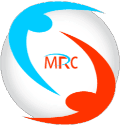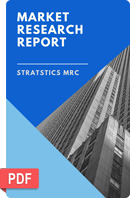
Kaposi Sarcoma Market
Kaposi Sarcoma Market Forecasts to 2030 - Global Analysis By Type (Classic Kaposi Sarcoma, Endemic Kaposi Sarcoma, Epidemic Kaposi Sarcoma, Immunosuppression-Associated Kaposi Sarcoma, Latrogenic Kaposi Sarcoma, Disseminated Kaposi Sarcoma and Other Types), Diagnostic Method, Treatment Modality, End User and By Geography

|
Years Covered |
2021-2030 |
|
Estimated Year Value (2023) |
US $108.69 MN |
|
Projected Year Value (2030) |
US $150.92 MN |
|
CAGR (2023 - 2030) |
4.8% |
|
Regions Covered |
North America, Europe, Asia Pacific, South America, and Middle East & Africa |
|
Countries Covered |
US, Canada, Mexico, Germany, UK, Italy, France, Spain, Japan, China, India, Australia, New Zealand, South Korea, Rest of Asia Pacific, South America, Argentina, Brazil, Chile, Middle East & Africa, Saudi Arabia, UAE, Qatar, and South Africa |
|
Largest Market |
Asia Pacific |
|
Highest Growing Market |
North America |
According to Stratistics MRC, the Global Kaposi Sarcoma Market is accounted for $108.69 million in 2023 and is expected to reach $150.92 million by 2030 growing at a CAGR of 4.8% during the forecast period. Kaposi Sarcoma (KS) is a rare cancer characterized by abnormal growth of blood vessels and lesions on the skin, mucous membranes, and internal organs. It is caused by infection with human herpesvirus 8 (HHV-8), often affecting individuals with compromised immune systems, such as those with HIV/AIDS or undergoing immunosuppressive therapy. Early diagnosis and effective management are crucial for improving outcomes in patients with Kaposi Sarcoma.
According to the study published in Clinical Cancer Research in March 2022, the study concluded that Pomalidomide is a safe and effective chemotherapy-sparing medication for the treatment of Kaposi sarcoma in people with or without HIV.
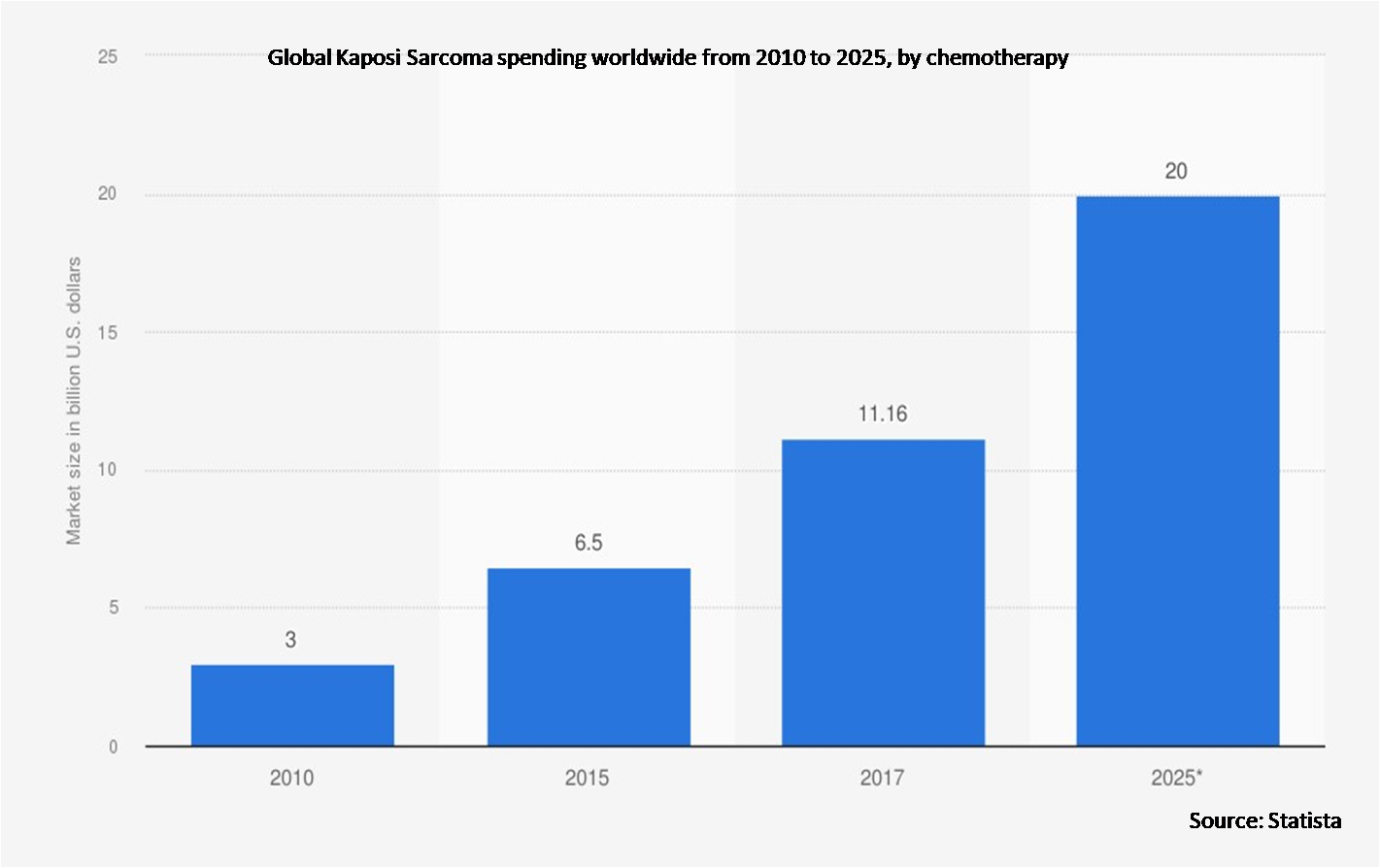
Market Dynamics:
Driver:
Growing prevalence of HIV/AIDS
HIV/AIDS weakens the immune system, making individuals more susceptible to developing kaposi sarcoma, a cancer associated with human herpesvirus 8 (HHV-8) infections. As HIV/AIDS prevalence raises globally, particularly in regions with limited access to antiretroviral therapy, the incidence of Kaposi sarcoma increases accordingly. This heightened prevalence drives demand for early detection, diagnosis, and treatment of Kaposi sarcoma, fueling market growth for therapeutic interventions, diagnostic tools, and supportive care services aimed at managing the disease in HIV/AIDS-affected populations.
Restraint:
Side effects of therapy
The therapies for kaposi sarcoma, including chemotherapy, radiation therapy, and immunotherapy, can lead to significant side effects. They may cause nausea, vomiting, hair loss, and bone marrow suppression, compromising patients' quality of life and treatment adherence. These side effects not only impact patient well-being but also deter treatment compliance and may necessitate dose adjustments or discontinuation, thereby limiting the market growth by reducing patient acceptance and adoption of kaposi sarcoma therapies.
Opportunity:
Advancements in diagnosis
Advancements in diagnosis significantly enhance early detection and treatment initiation. Improved diagnostic techniques such as immunohistochemistry and molecular testing enable more accurate and timely identification of kaposi sarcoma lesions, leading to earlier interventions and better patient outcomes. Additionally, advances in biomarker research facilitate risk stratification and personalized therapy approaches. These diagnostic innovations expand the market by increasing the demand for diagnostic tools, imaging equipment, and ancillary services related to kaposi sarcoma diagnosis and monitoring.
Threat:
High cost of treatment
Kaposi Sarcoma's high cost of treatment is primarily attributed to the complex and often prolonged therapeutic regimens involved. These regimens may include chemotherapy, radiation therapy, and targeted or immunotherapy, which are costly to administer and often require specialized medical expertise. Additionally, supportive care to manage treatment-related side effects further adds to the overall treatment expenses. The high cost of treatment can limit access to care, particularly in regions with limited healthcare resources, thereby hampering market growth.
Covid-19 Impact
The covid-19 pandemic has had a multifaceted impact on the kaposi sarcoma market. Healthcare systems strained by the pandemic diverted resources away from non-covid-related conditions, leading to delays in Kaposi sarcoma diagnosis and treatment. Economic uncertainties and healthcare resource reallocations also affected research funding and drug development efforts. Consequently, the pandemic exacerbated existing challenges in kaposi sarcoma management and impeded market growth by disrupting patient care pathways and research endeavours.
The epidemic kaposi sarcoma segment is expected to be the largest during the forecast period
The epidemic kaposi sarcoma segment is estimated to have a lucrative growth. Epidemic Kaposi Sarcoma refers to a form of KS that emerged during the HIV/AIDS epidemic, predominantly affecting immunocompromised individuals. It is caused by human herpes virus 8 (HHV-8) infections and is characterized by the development of multiple, often widespread, lesions on the skin, mucous membranes, and internal organs. The HIV/AIDS epidemic, particularly in regions with high prevalence, significantly contributed to the rise of epidemic KS cases.
The chemotherapy segment is expected to have the highest CAGR during the forecast period
The chemotherapy segment is anticipated to witness the highest CAGR growth during the forecast period. Chemotherapy is a cornerstone treatment for Kaposi Sarcoma, particularly in advanced or aggressive cases. The most commonly used chemotherapy agents include liposomal anthracyclines, paclitaxel, and vinca alkaloids. Chemotherapy aims to shrink or stabilize KS tumors, alleviate symptoms, and improve quality of life. Chemotherapy regimens have been shown to extend survival in KS patients which is accelerating the segment growth.
Region with largest share:
Asia Pacific is projected to hold the largest market share during the forecast period. Countries like India and Thailand have established strong healthcare infrastructure and research capabilities. Collaboration between governments, healthcare organizations and pharmaceutical companies in the region are improving patient outcomes. Further, increasing efforts to expand access to antiretroviral therapy, and raise awareness about HIV/AIDS and related cancers offer growth opportunities for the Kaposi Sarcoma market in Asia Pacific.
Region with highest CAGR:
North America is projected to have the highest CAGR over the forecast period, owing to the high prevalence of HIV/AIDS, advanced healthcare infrastructure, and increasing awareness about the disease. The region's well-established pharmaceutical and biotechnology industries contribute to the availability of advanced treatment options and clinical trials for Kaposi Sarcoma. Additionally, supportive government policies, robust research funding, and initiatives promoting HIV/AIDS awareness and prevention further bolster market growth.
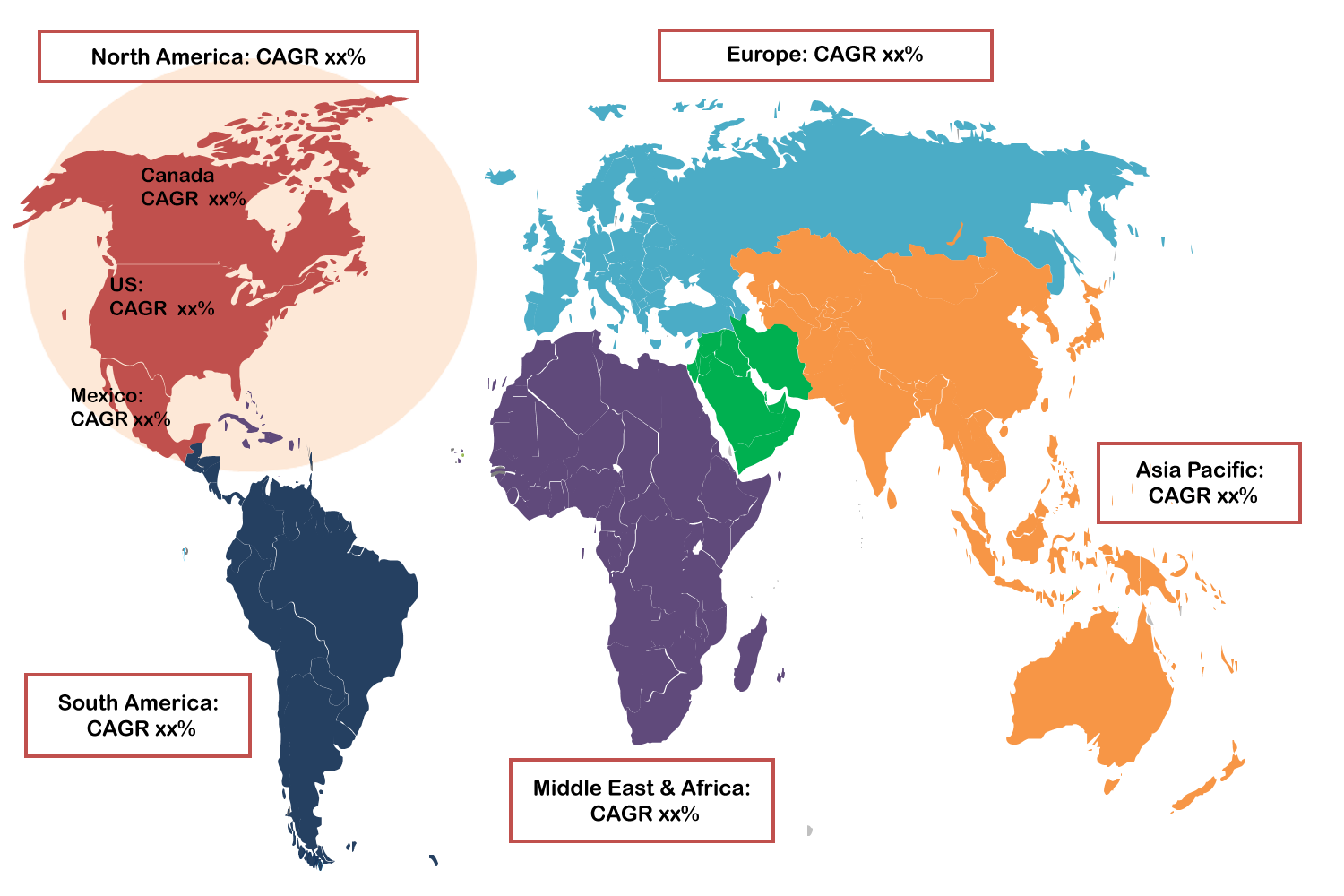
Key players in the market
Some of the key players profiled in the Kaposi Sarcoma Market include Abbott Laboratories, AbbVie Inc, Biogen Inc, Bio-Rad Laboratories, Cornell Engineering, Celgene Corporation, Cipla Limited, Eli Lilly and Company, Genentech Inc, Johnson & Johnson, Leo Pharma A/S, Merck & Co. Inc, Novartis International AG, Pfizer Inc, Roche Holding AG, Siemens Healthineers, Takeda Pharmaceutical Company Limited, Teva Pharmaceutical, Thermo Fisher Scientific Inc and Vertex Pharmaceuticals Incorporated.
Key Developments:
In August 2022, Researchers at Cornell Engineering and Weill Cornell Medicine designed a portable diagnostic device that has been deployed in clinical tests in Uganda to identify cases of Kaposi sarcoma. This common yet difficult-to-detect cancer often signals the presence of HIV infection.
Types Covered:
• Classic Kaposi Sarcoma
• Endemic Kaposi Sarcoma
• Epidemic Kaposi Sarcoma
• Immunosuppression-Associated Kaposi Sarcoma
• Latrogenic Kaposi Sarcoma
• Disseminated Kaposi Sarcoma
• Other Types
Diagnostic Methods Covered:
• Histopathology
• Immunohistochemistry (IHC)
• Polymerase Chain Reaction (PCR)
• Biopsy
• Other Diagnostic Methods
Treatment Modalities Covered:
• Antiretroviral Therapy (ART)
• Chemotherapy
• Immunotherapy
• Radiation Therapy
• Targeted Therapy
• Other Therapies
End Users Covered:
• Hospitals & Clinics
• Cancer Research Institutions
• Ambulatory Surgical Centers
• Home Healthcare
• Other End Users
Regions Covered:
• North America
o US
o Canada
o Mexico
• Europe
o Germany
o UK
o Italy
o France
o Spain
o Rest of Europe
• Asia Pacific
o Japan
o China
o India
o Australia
o New Zealand
o South Korea
o Rest of Asia Pacific
• South America
o Argentina
o Brazil
o Chile
o Rest of South America
• Middle East & Africa
o Saudi Arabia
o UAE
o Qatar
o South Africa
o Rest of Middle East & Africa
What our report offers:
- Market share assessments for the regional and country-level segments
- Strategic recommendations for the new entrants
- Covers Market data for the years 2021, 2022, 2023, 2026, and 2030
- Market Trends (Drivers, Constraints, Opportunities, Threats, Challenges, Investment Opportunities, and recommendations)
- Strategic recommendations in key business segments based on the market estimations
- Competitive landscaping mapping the key common trends
- Company profiling with detailed strategies, financials, and recent developments
- Supply chain trends mapping the latest technological advancements
Free Customization Offerings:
All the customers of this report will be entitled to receive one of the following free customization options:
• Company Profiling
o Comprehensive profiling of additional market players (up to 3)
o SWOT Analysis of key players (up to 3)
• Regional Segmentation
o Market estimations, Forecasts and CAGR of any prominent country as per the client's interest (Note: Depends on feasibility check)
• Competitive Benchmarking
o Benchmarking of key players based on product portfolio, geographical presence, and strategic alliances
Table of Contents
1 Executive Summary
2 Preface
2.1 Abstract
2.2 Stake Holders
2.3 Research Scope
2.4 Research Methodology
2.4.1 Data Mining
2.4.2 Data Analysis
2.4.3 Data Validation
2.4.4 Research Approach
2.5 Research Sources
2.5.1 Primary Research Sources
2.5.2 Secondary Research Sources
2.5.3 Assumptions
3 Market Trend Analysis
3.1 Introduction
3.2 Drivers
3.3 Restraints
3.4 Opportunities
3.5 Threats
3.6 End User Analysis
3.7 Emerging Markets
3.8 Impact of Covid-19
4 Porters Five Force Analysis
4.1 Bargaining power of suppliers
4.2 Bargaining power of buyers
4.3 Threat of substitutes
4.4 Threat of new entrants
4.5 Competitive rivalry
5 Global Kaposi Sarcoma Market, By Type
5.1 Introduction
5.2 Classic Kaposi Sarcoma
5.3 Endemic Kaposi Sarcoma
5.4 Epidemic Kaposi Sarcoma
5.5 Immunosuppression-Associated Kaposi Sarcoma
5.6 Latrogenic Kaposi Sarcoma
5.7 Disseminated Kaposi Sarcoma
5.8 Other Types
6 Global Kaposi Sarcoma Market, By Diagnostic Method
6.1 Introduction
6.2 Histopathology
6.3 Immunohistochemistry (IHC)
6.4 Polymerase Chain Reaction (PCR)
6.5 Biopsy
6.6 Other Diagnostic Methods
7 Global Kaposi Sarcoma Market, By Treatment Modality
7.1 Introduction
7.2 Antiretroviral Therapy (ART)
7.3 Chemotherapy
7.4 Immunotherapy
7.5 Radiation Therapy
7.6 Targeted Therapy
7.7 Other Therapies
8 Global Kaposi Sarcoma Market, By End User
8.1 Introduction
8.2 Hospitals & Clinics
8.3 Cancer Research Institutions
8.4 Ambulatory Surgical Centers
8.5 Home Healthcare
8.6 Other End Users
9 Global Kaposi Sarcoma Market, By Geography
9.1 Introduction
9.2 North America
9.2.1 US
9.2.2 Canada
9.2.3 Mexico
9.3 Europe
9.3.1 Germany
9.3.2 UK
9.3.3 Italy
9.3.4 France
9.3.5 Spain
9.3.6 Rest of Europe
9.4 Asia Pacific
9.4.1 Japan
9.4.2 China
9.4.3 India
9.4.4 Australia
9.4.5 New Zealand
9.4.6 South Korea
9.4.7 Rest of Asia Pacific
9.5 South America
9.5.1 Argentina
9.5.2 Brazil
9.5.3 Chile
9.5.4 Rest of South America
9.6 Middle East & Africa
9.6.1 Saudi Arabia
9.6.2 UAE
9.6.3 Qatar
9.6.4 South Africa
9.6.5 Rest of Middle East & Africa
10 Key Developments
10.1 Agreements, Partnerships, Collaborations and Joint Ventures
10.2 Acquisitions & Mergers
10.3 New Product Launch
10.4 Expansions
10.5 Other Key Strategies
11 Company Profiling
11.1 Abbott Laboratories
11.2 AbbVie Inc
11.3 Biogen Inc
11.4 Bio-Rad Laboratories
11.5 Cornell Engineering
11.6 Celgene Corporation
11.7 Cipla Limited
11.8 Eli Lilly and Company
11.9 Genentech Inc
11.10 Johnson & Johnson
11.11 Leo Pharma A/S
11.12 Merck & Co. Inc
11.13 Novartis International AG
11.14 Pfizer Inc
11.15 Roche Holding AG
11.16 Siemens Healthineers
11.17 Takeda Pharmaceutical Company Limited
11.18 Teva Pharmaceutical
11.19 Thermo Fisher Scientific Inc
11.20 Vertex Pharmaceuticals Incorporated
List of Tables
1 Global Kaposi Sarcoma Market Outlook, By Region (2021-2030) ($MN)
2 Global Kaposi Sarcoma Market Outlook, By Type (2021-2030) ($MN)
3 Global Kaposi Sarcoma Market Outlook, By Classic Kaposi Sarcoma (2021-2030) ($MN)
4 Global Kaposi Sarcoma Market Outlook, By Endemic Kaposi Sarcoma (2021-2030) ($MN)
5 Global Kaposi Sarcoma Market Outlook, By Epidemic Kaposi Sarcoma (2021-2030) ($MN)
6 Global Kaposi Sarcoma Market Outlook, By Immunosuppression-Associated Kaposi Sarcoma (2021-2030) ($MN)
7 Global Kaposi Sarcoma Market Outlook, By Latrogenic Kaposi Sarcoma (2021-2030) ($MN)
8 Global Kaposi Sarcoma Market Outlook, By Disseminated Kaposi Sarcoma (2021-2030) ($MN)
9 Global Kaposi Sarcoma Market Outlook, By Other Types (2021-2030) ($MN)
10 Global Kaposi Sarcoma Market Outlook, By Diagnostic Method (2021-2030) ($MN)
11 Global Kaposi Sarcoma Market Outlook, By Histopathology (2021-2030) ($MN)
12 Global Kaposi Sarcoma Market Outlook, By Immunohistochemistry (IHC) (2021-2030) ($MN)
13 Global Kaposi Sarcoma Market Outlook, By Polymerase Chain Reaction (PCR) (2021-2030) ($MN)
14 Global Kaposi Sarcoma Market Outlook, By Biopsy (2021-2030) ($MN)
15 Global Kaposi Sarcoma Market Outlook, By Other Diagnostic Methods (2021-2030) ($MN)
16 Global Kaposi Sarcoma Market Outlook, By Treatment Modality (2021-2030) ($MN)
17 Global Kaposi Sarcoma Market Outlook, By Antiretroviral Therapy (ART) (2021-2030) ($MN)
18 Global Kaposi Sarcoma Market Outlook, By Chemotherapy (2021-2030) ($MN)
19 Global Kaposi Sarcoma Market Outlook, By Immunotherapy (2021-2030) ($MN)
20 Global Kaposi Sarcoma Market Outlook, By Radiation Therapy (2021-2030) ($MN)
21 Global Kaposi Sarcoma Market Outlook, By Targeted Therapy (2021-2030) ($MN)
22 Global Kaposi Sarcoma Market Outlook, By Other Therapies (2021-2030) ($MN)
23 Global Kaposi Sarcoma Market Outlook, By End User (2021-2030) ($MN)
24 Global Kaposi Sarcoma Market Outlook, By Hospitals & Clinics (2021-2030) ($MN)
25 Global Kaposi Sarcoma Market Outlook, By Cancer Research Institutions (2021-2030) ($MN)
26 Global Kaposi Sarcoma Market Outlook, By Ambulatory Surgical Centers (2021-2030) ($MN)
27 Global Kaposi Sarcoma Market Outlook, By Home Healthcare (2021-2030) ($MN)
28 Global Kaposi Sarcoma Market Outlook, By Other End Users (2021-2030) ($MN)
Note: Tables for North America, Europe, APAC, South America, and Middle East & Africa Regions are also represented in the same manner as above.
List of Figures
RESEARCH METHODOLOGY
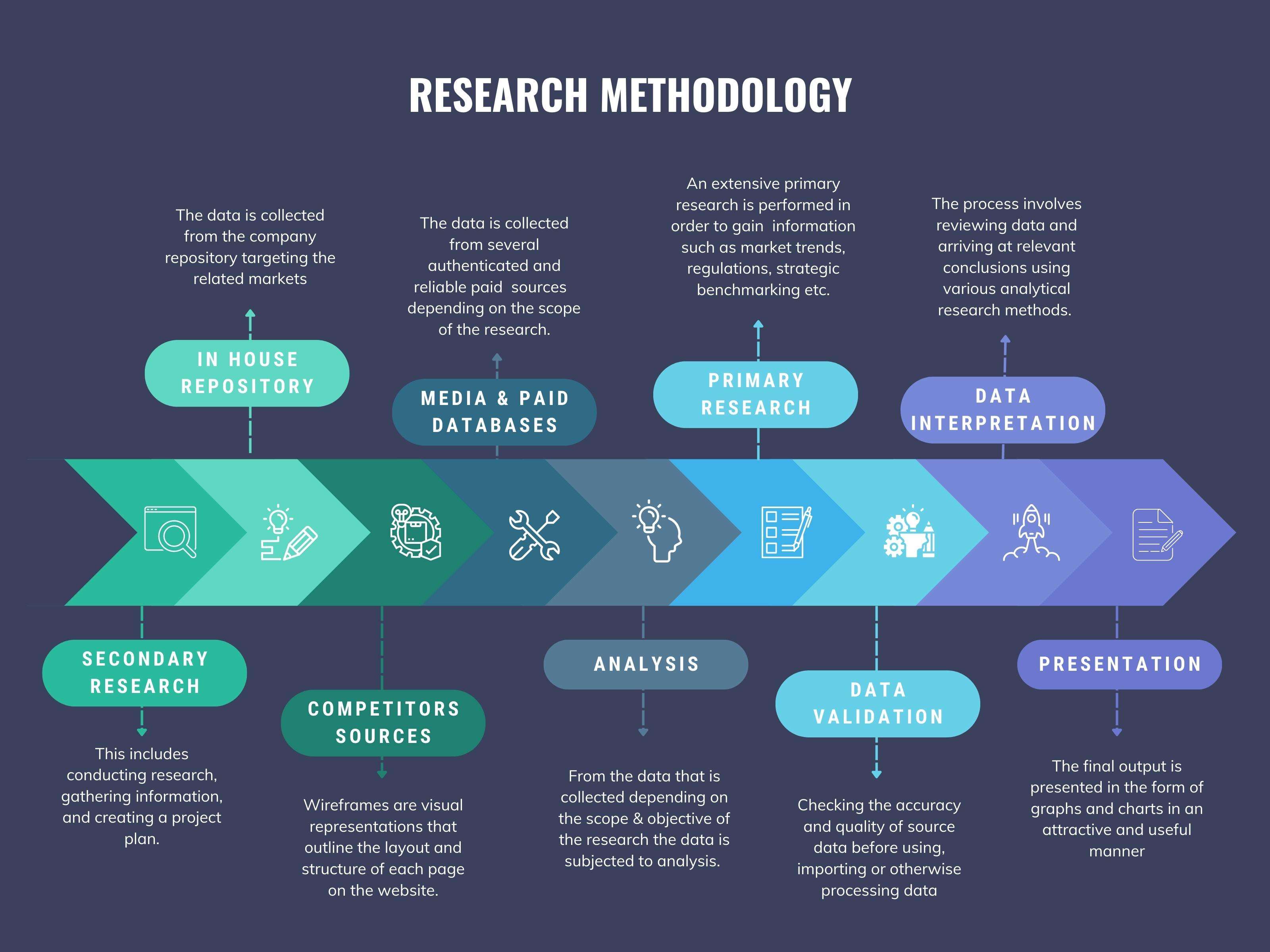
We at ‘Stratistics’ opt for an extensive research approach which involves data mining, data validation, and data analysis. The various research sources include in-house repository, secondary research, competitor’s sources, social media research, client internal data, and primary research.
Our team of analysts prefers the most reliable and authenticated data sources in order to perform the comprehensive literature search. With access to most of the authenticated data bases our team highly considers the best mix of information through various sources to obtain extensive and accurate analysis.
Each report takes an average time of a month and a team of 4 industry analysts. The time may vary depending on the scope and data availability of the desired market report. The various parameters used in the market assessment are standardized in order to enhance the data accuracy.
Data Mining
The data is collected from several authenticated, reliable, paid and unpaid sources and is filtered depending on the scope & objective of the research. Our reports repository acts as an added advantage in this procedure. Data gathering from the raw material suppliers, distributors and the manufacturers is performed on a regular basis, this helps in the comprehensive understanding of the products value chain. Apart from the above mentioned sources the data is also collected from the industry consultants to ensure the objective of the study is in the right direction.
Market trends such as technological advancements, regulatory affairs, market dynamics (Drivers, Restraints, Opportunities and Challenges) are obtained from scientific journals, market related national & international associations and organizations.
Data Analysis
From the data that is collected depending on the scope & objective of the research the data is subjected for the analysis. The critical steps that we follow for the data analysis include:
- Product Lifecycle Analysis
- Competitor analysis
- Risk analysis
- Porters Analysis
- PESTEL Analysis
- SWOT Analysis
The data engineering is performed by the core industry experts considering both the Marketing Mix Modeling and the Demand Forecasting. The marketing mix modeling makes use of multiple-regression techniques to predict the optimal mix of marketing variables. Regression factor is based on a number of variables and how they relate to an outcome such as sales or profits.
Data Validation
The data validation is performed by the exhaustive primary research from the expert interviews. This includes telephonic interviews, focus groups, face to face interviews, and questionnaires to validate our research from all aspects. The industry experts we approach come from the leading firms, involved in the supply chain ranging from the suppliers, distributors to the manufacturers and consumers so as to ensure an unbiased analysis.
We are in touch with more than 15,000 industry experts with the right mix of consultants, CEO's, presidents, vice presidents, managers, experts from both supply side and demand side, executives and so on.
The data validation involves the primary research from the industry experts belonging to:
- Leading Companies
- Suppliers & Distributors
- Manufacturers
- Consumers
- Industry/Strategic Consultants
Apart from the data validation the primary research also helps in performing the fill gap research, i.e. providing solutions for the unmet needs of the research which helps in enhancing the reports quality.
For more details about research methodology, kindly write to us at info@strategymrc.com
Frequently Asked Questions
In case of any queries regarding this report, you can contact the customer service by filing the “Inquiry Before Buy” form available on the right hand side. You may also contact us through email: info@strategymrc.com or phone: +1-301-202-5929
Yes, the samples are available for all the published reports. You can request them by filling the “Request Sample” option available in this page.
Yes, you can request a sample with your specific requirements. All the customized samples will be provided as per the requirement with the real data masked.
All our reports are available in Digital PDF format. In case if you require them in any other formats, such as PPT, Excel etc you can submit a request through “Inquiry Before Buy” form available on the right hand side. You may also contact us through email: info@strategymrc.com or phone: +1-301-202-5929
We offer a free 15% customization with every purchase. This requirement can be fulfilled for both pre and post sale. You may send your customization requirements through email at info@strategymrc.com or call us on +1-301-202-5929.
We have 3 different licensing options available in electronic format.
- Single User Licence: Allows one person, typically the buyer, to have access to the ordered product. The ordered product cannot be distributed to anyone else.
- 2-5 User Licence: Allows the ordered product to be shared among a maximum of 5 people within your organisation.
- Corporate License: Allows the product to be shared among all employees of your organisation regardless of their geographical location.
All our reports are typically be emailed to you as an attachment.
To order any available report you need to register on our website. The payment can be made either through CCAvenue or PayPal payments gateways which accept all international cards.
We extend our support to 6 months post sale. A post sale customization is also provided to cover your unmet needs in the report.
Request Customization
We provide a free 15% customization on every purchase. This requirement can be fulfilled for both pre and post sale. You may send your customization requirements through email at info@strategymrc.com or call us on +1-301-202-5929.
Note: This customization is absolutely free until it falls under the 15% bracket. If your requirement exceeds this a feasibility check will be performed. Post that, a quote will be provided along with the timelines.
WHY CHOOSE US ?

Assured Quality
Best in class reports with high standard of research integrity

24X7 Research Support
Continuous support to ensure the best customer experience.

Free Customization
Adding more values to your product of interest.

Safe & Secure Access
Providing a secured environment for all online transactions.

Trusted by 600+ Brands
Serving the most reputed brands across the world.
